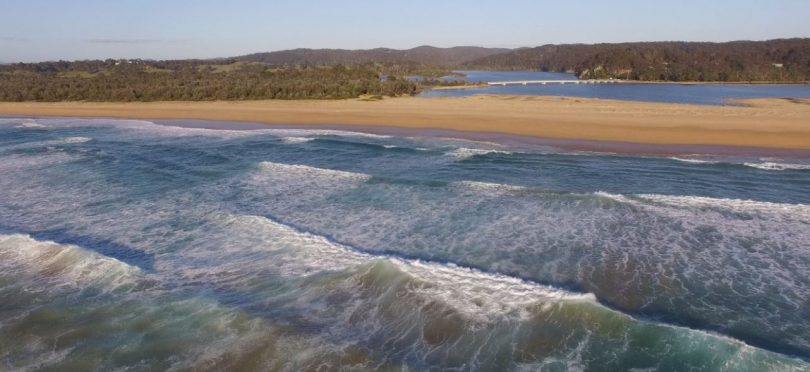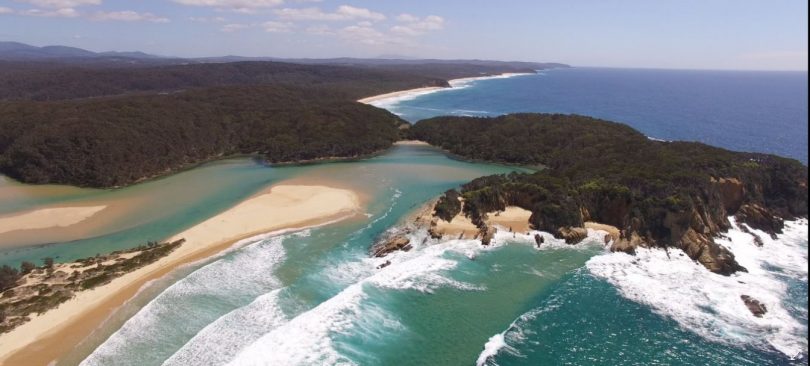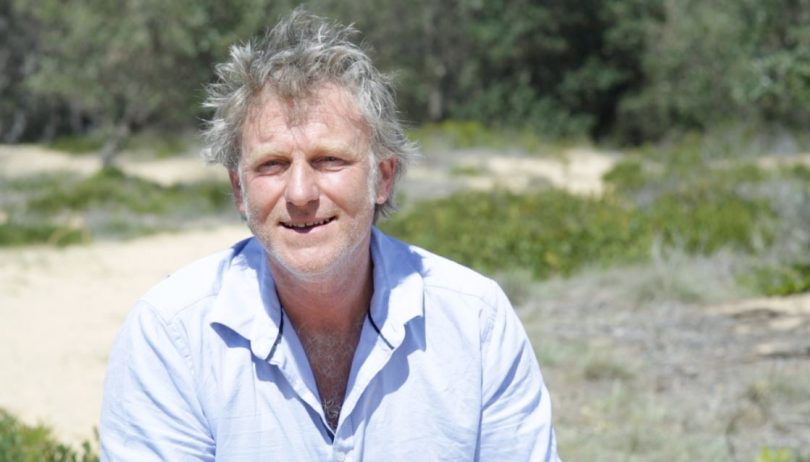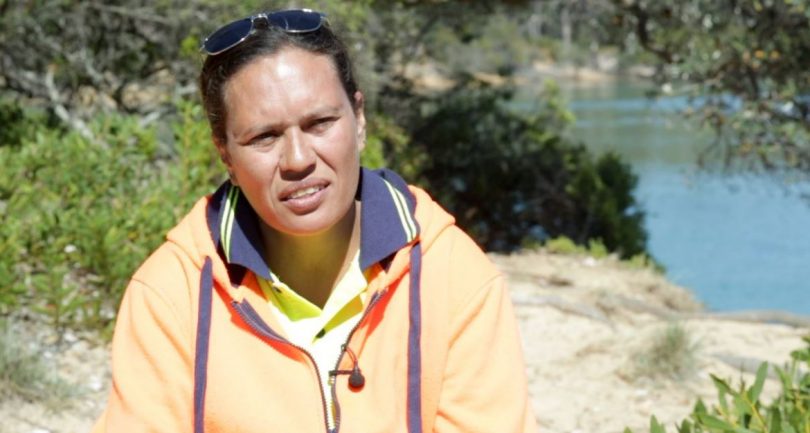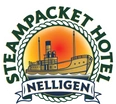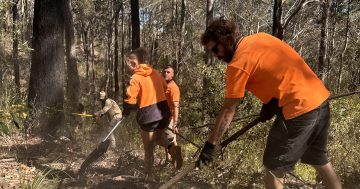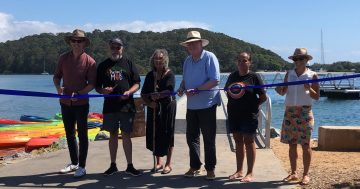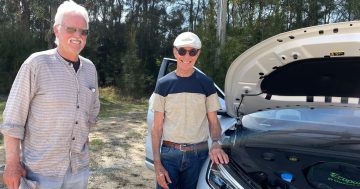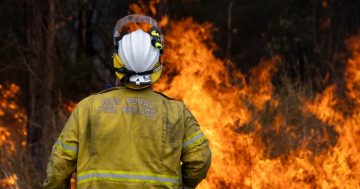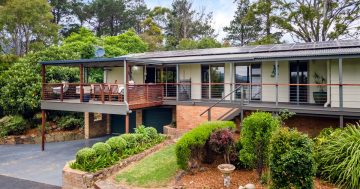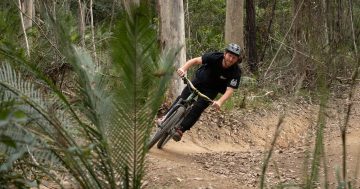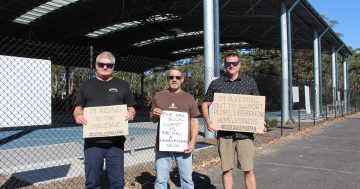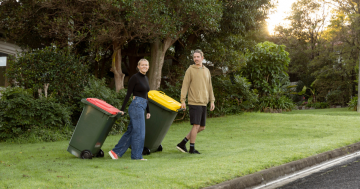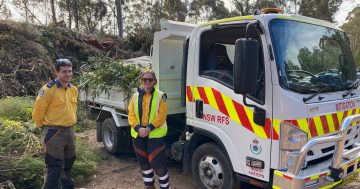The beaches of the Bega Valley are clean and largely weed free for a reason. It doesn’t just happen.
This 225 kilometre strip of gold and sapphire coastline is tended to like a garden, a huge community effort that has just celebrated ten years of grassroots environmental action.
But as this collaboration between traditional owners, government agencies, and community organisations looks to the future; funding is uncertain.
A decade ago, the beaches that run from Bermagui to the Victorian Border were a different sight to what you see now.
In July 2007, alarmed by the growing threat he’d noticed on local beaches, Bermagui based botanist Stuart Cameron undertook an exhaustive 12-month survey of the Bega Valley’s 101 beaches.
“I recognised that we had a real window of opportunity along this coast,” Stuart says.
Stuart’s work identified about 90 invasive species that were starting to have a significant impact – Bitou, African Beach Daisy, African Boxthorn, and Sea Spurge were at the top of the list.
“We were at a tipping point, had the project not commenced, we would have had much greater infestation, which possibly could not have been controlled,” Stuart says.
“For example, at Murrah Beach and Merimbula Main Beach, there was so much Sea Spurge that it took teams of four or five people, four or five days to clear one beach.
“We can go back to those beaches now and deal with them in half a day,” Stuart smiles.
What came from Stuart’s research was an impressive, first of its kind response, that with government support continues until Autumn 2018.
For ten years, backed by Commonwealth and State Governments via the NSW Environment Trust, the “Protecting the Wilderness Coast Project” has been a powerful, united effort; an umbrella that has pulled together what was a range of separate control efforts.
Agencies like Bega Valley Shire Council, South East Local Land Services, National Parks and Wildlife Service, and Far South Coast Landcare, recognised that combining resources and spending was the only way to tackle weeds in this vast environment.
But it’s the work of the traditional owners of this land, staff from the Merrimans, Bega, and Eden Aboriginal Land Councils and community-based Landcare and Dunecare volunteers that have been critical to the success of this war on weeds.
Far South Coast Landcare Coordinator, Chris Post says the program works due to its simplicity.
“Twice a year for six to seven weeks, these guys [Aboriginal Land Councils] are working on country, their office is the beaches of the Far South Coast,” he says.
“They walk the beaches and work with Landcare groups, removing weeds and rubbish from our coast.”
Over 70 cubic metres of litter have been removed by project workers over the last decade.
A huge collection of plastic and glass bottles, plastic bags, balloons, polystyrene, footwear, fishing line, and debris, all of which have the potential to harm marine life and, in some cases, seriously injure beachgoers.
Fortunately, the trend in litter volume is downwards.
Many people in the community are unaware of the work that goes into keeping this environment in pristine condition, and while awareness around litter is high, the same can’t be said for the impacts of coastal weeds.
“Bitou can seem attractive with its mass of yellow flowers, but it has the capacity to displace virtually all native vegetation,” Stuart says.
“And there are others such as Sea Spurge which was an accidental introduction in ships ballast, that has a toxic sap.”
Weeds out-compete and take over native species. Most are home garden escapees or are washed ashore by the changing tide. In some cases, weeds deploy a range of weaponry as they take hold of a beach.
A few weeds have the capacity to actually alter the soil and make it unsuitable for native plants to germinate and grow.
“The value of biodiversity in this or any environment is a question of resilience and being able to recover from major impact like storms,” Stuart explains.
As the impacts of rising seas levels and more frequent storms take their toll on coastal communities, the weed work of the last decade is being rewarded.
“After the June 2016 storm there were huge areas that became de-vegetated along our coast,” Stuart says.
“Had we not [already] controlled weed species there would have just been a massive take-off of weeds.
“Over the ten years of the project we have massively depleted the weed seed bank,” he says.
From an economic perspective, the project cares for the region’s key asset.
Tourism is the most significant local industry and the coastline is the main attraction for visitors.
In the year ending June 2017, Sapphire Coast Tourism reported visitor numbers of 876,000 visitors, injecting $412 million into the local region, generating nearly 5000 jobs
Local Tourism Chief, Anthony Osborne points to increasing visitor numbers on the back of the highly successful “Unspoilt South Coast” global marketing campaign.
“Tourism monitors tell us domestic visitor numbers remain stable with a significant and pleasing increase in international [visitors],” he says.
Bega Valley Shire covers one-seventh of the NSW coastline. It’s in a healthy, “unspoilt” condition and draws people to holiday and live here, however keeping it that way is the ongoing challenge.
“This program [Coastal Weeds] has grown into a beautiful example of what can happen when you glue together the passion of community people, with local and state government agencies that are brave enough to try something different,” Chris says.
The fear of those who live and breath this project is that future government funds might not be available, putting an end to the six-monthly weed and litter sweeps that are so vital.
“Funding that pays homage and respects what has happened in the past would be beautiful to see,” Chris says.
Talk to those who have done this work over the last ten years, and they all say the same thing: “Weeds are relentless.”
“There is a need for ongoing surveillance, it doesn’t need to be as intense as it had to be in the early years, but it does need to be ongoing,” Stuart says.
The growth and development of people and networks has been just as significant as the reduction in weeds and litter.
“A large number of Aboriginal workers have gone on to full-time work in natural resource management with skills in plant identification and weed control techniques,” Stuart says.
Djiringanj men like Eric Bruce Carpenter, from Bega Aboriginal Land Council, says working on country means a lot.
“Yeah it is a bit of pride and I go back and tell my young fellas, and when they get older they’ll most probably do the same thing,” he says.
“It is a good thing for my people and for the community we are working for.”
Julie Green, from Bega Aboriginal Land Council, agrees.
“Last week I was in Merimbula and I had a lady and a man come up and ask me what I was doing,” Julie says.
“They said we’ve got one of the best-looking coasts on the East Coast.”
According to Chris: “Nature needs humans to be interacting with it in a positive way.”
“We remove humans and the work the group is doing, and we’ll be knee deep in Sea Spurge, Bitou, and Bone Seed in a couple of years,” he says.
One more sweep of Far South Coast beaches is planned before current funding runs out.
Those involved are hopeful their work and contribution to the health of the local environment will be recognised and the program will be extended.
*This article first appeared on RiotACT


